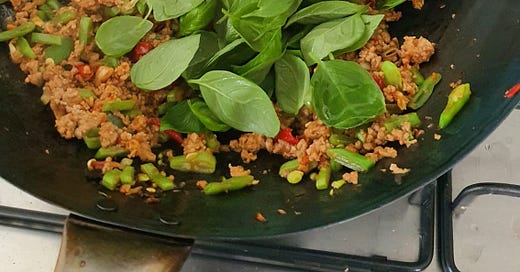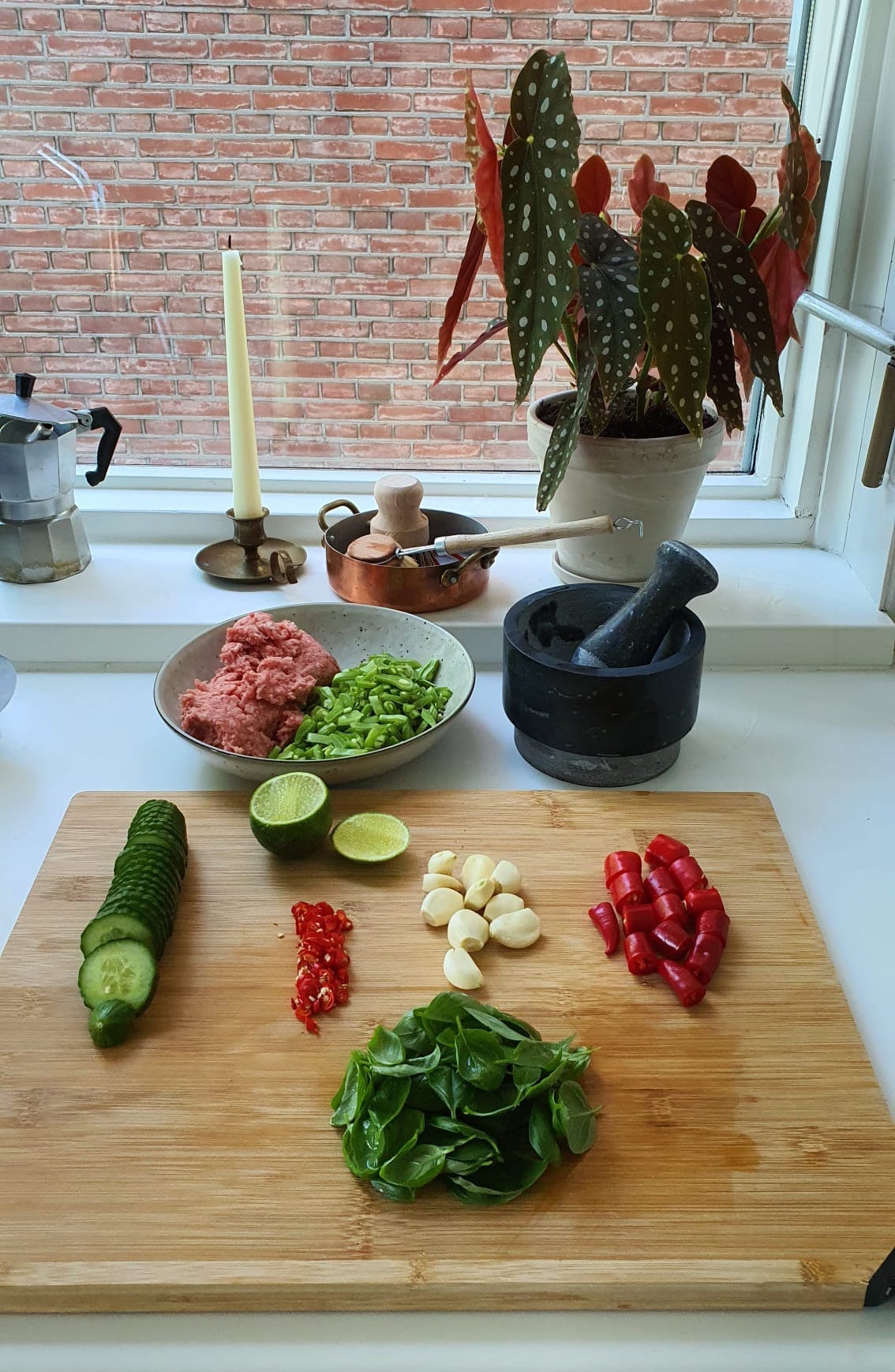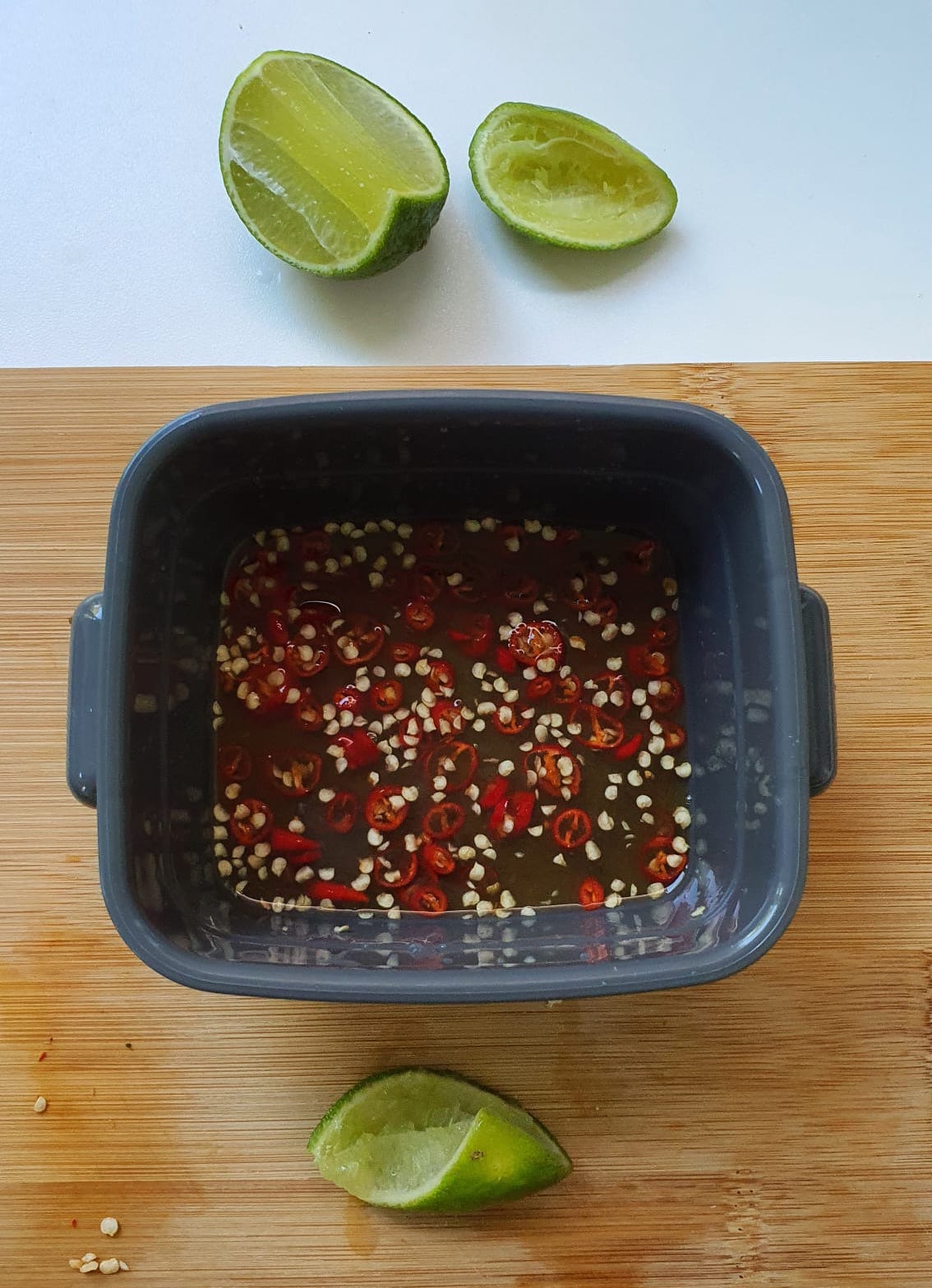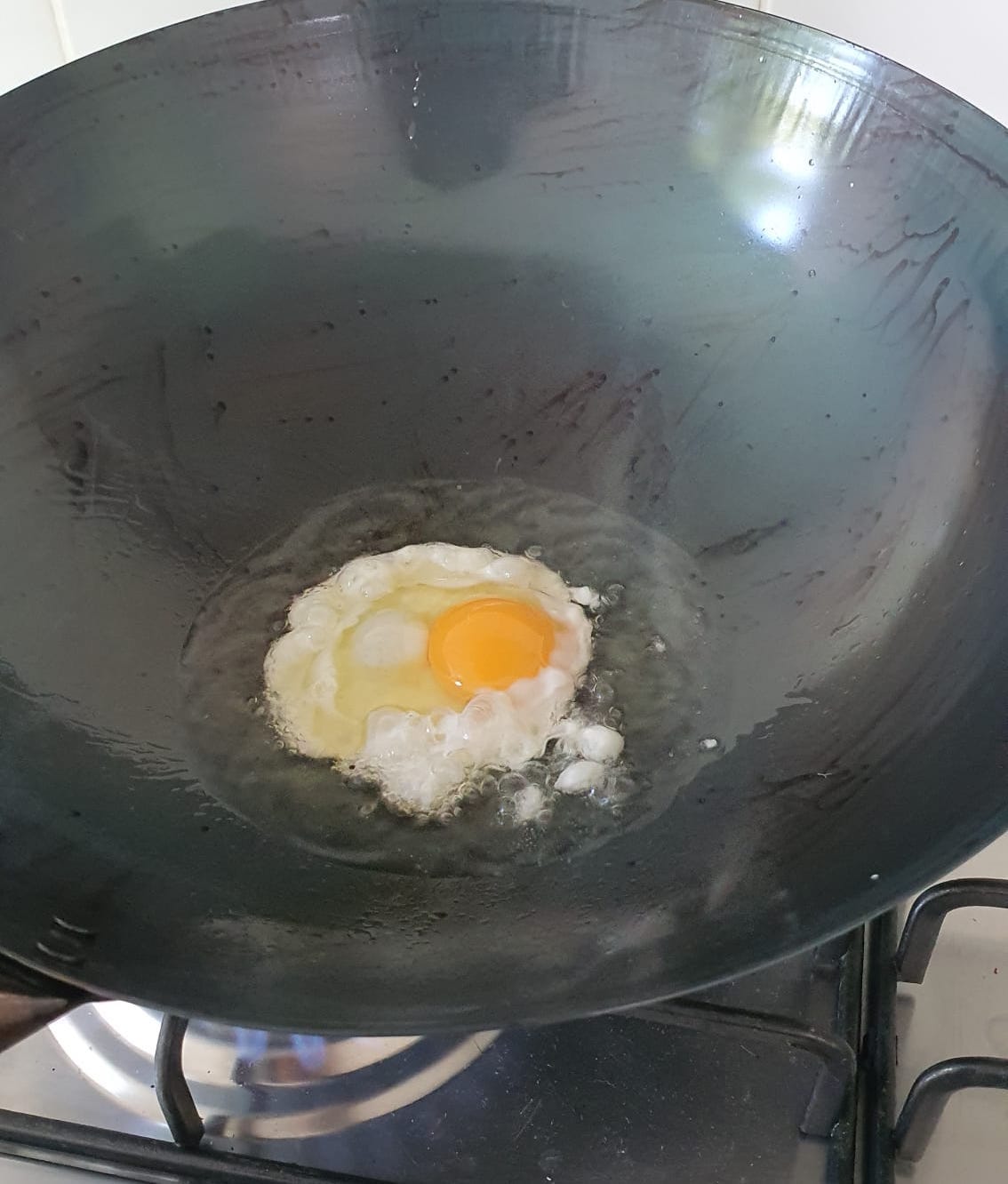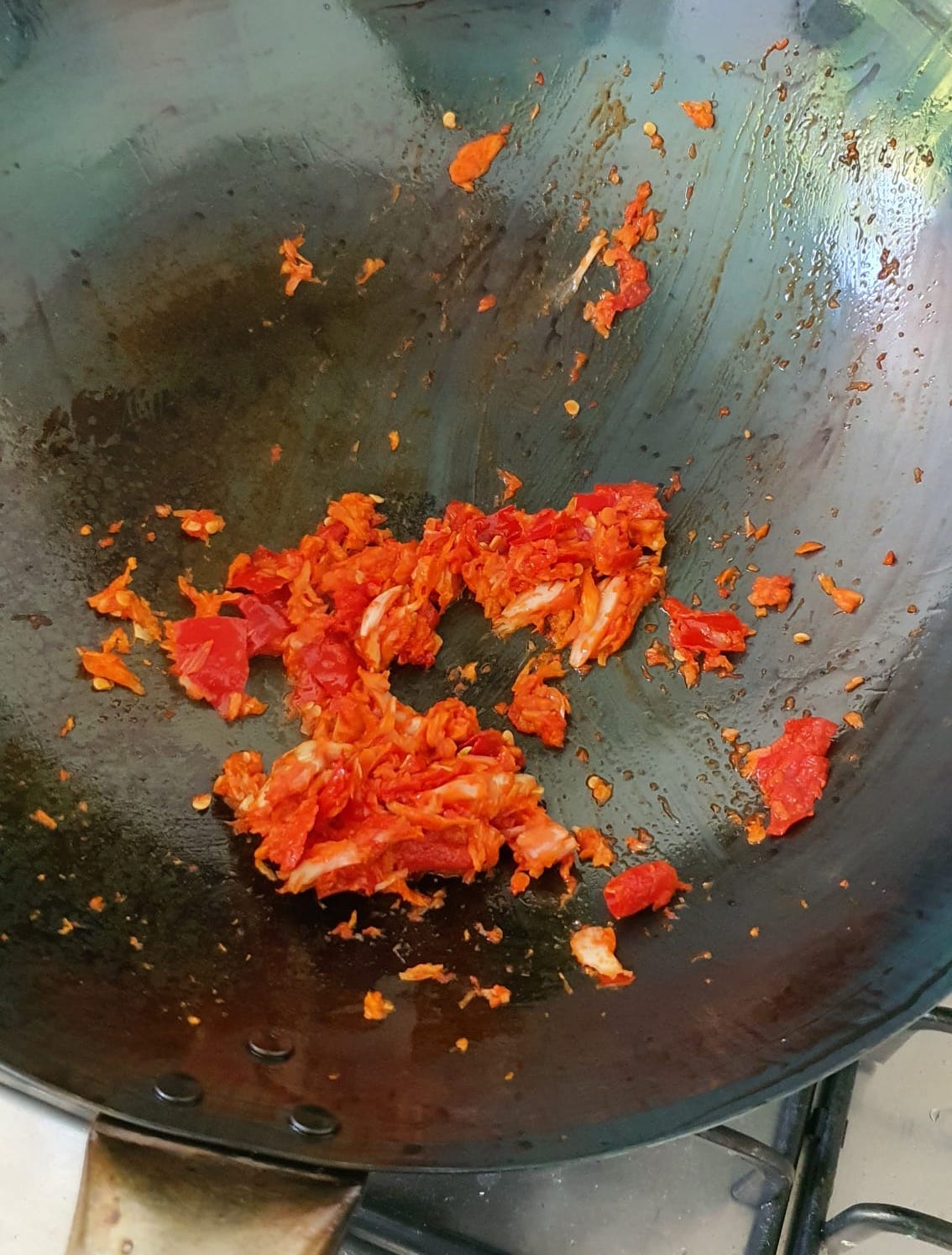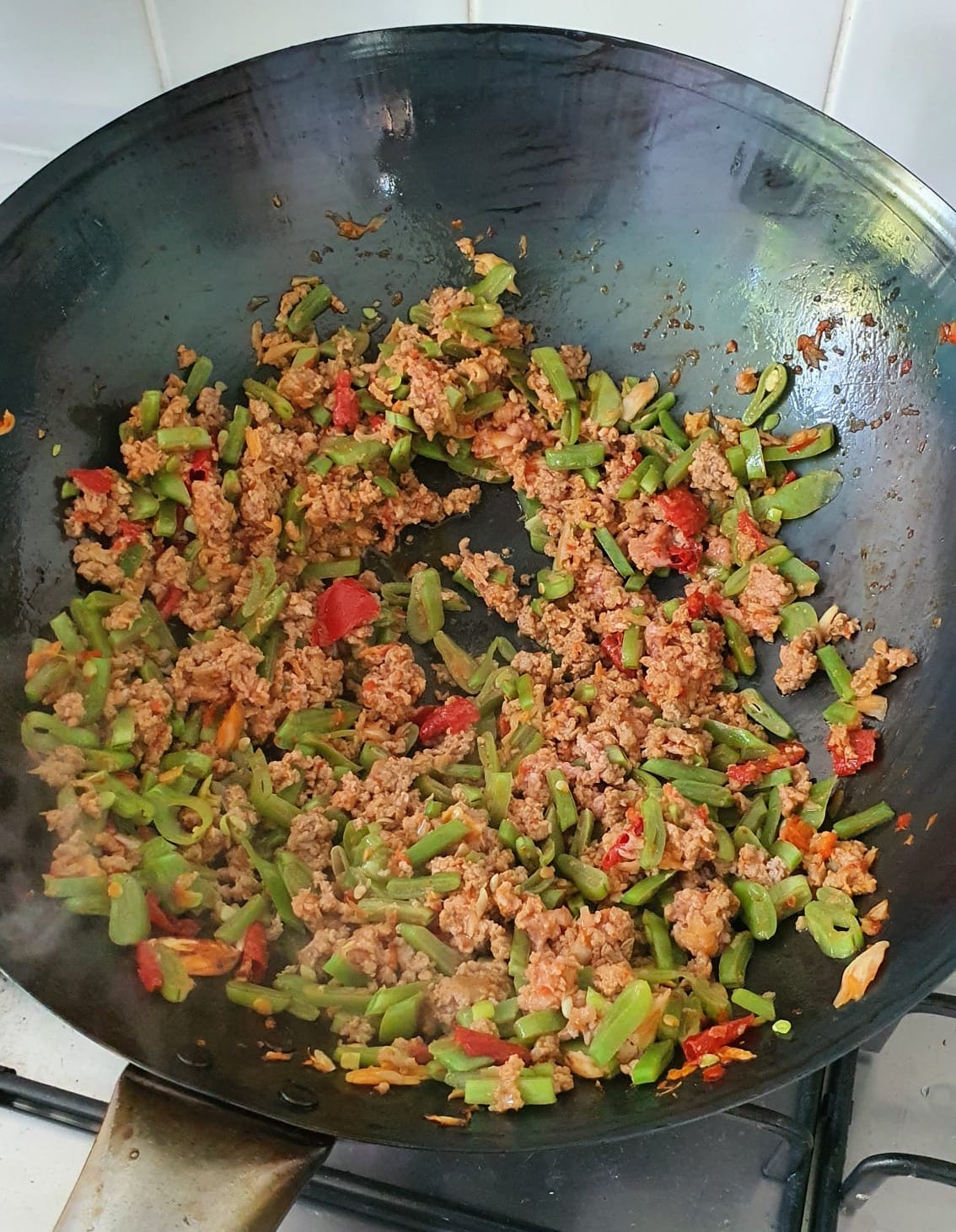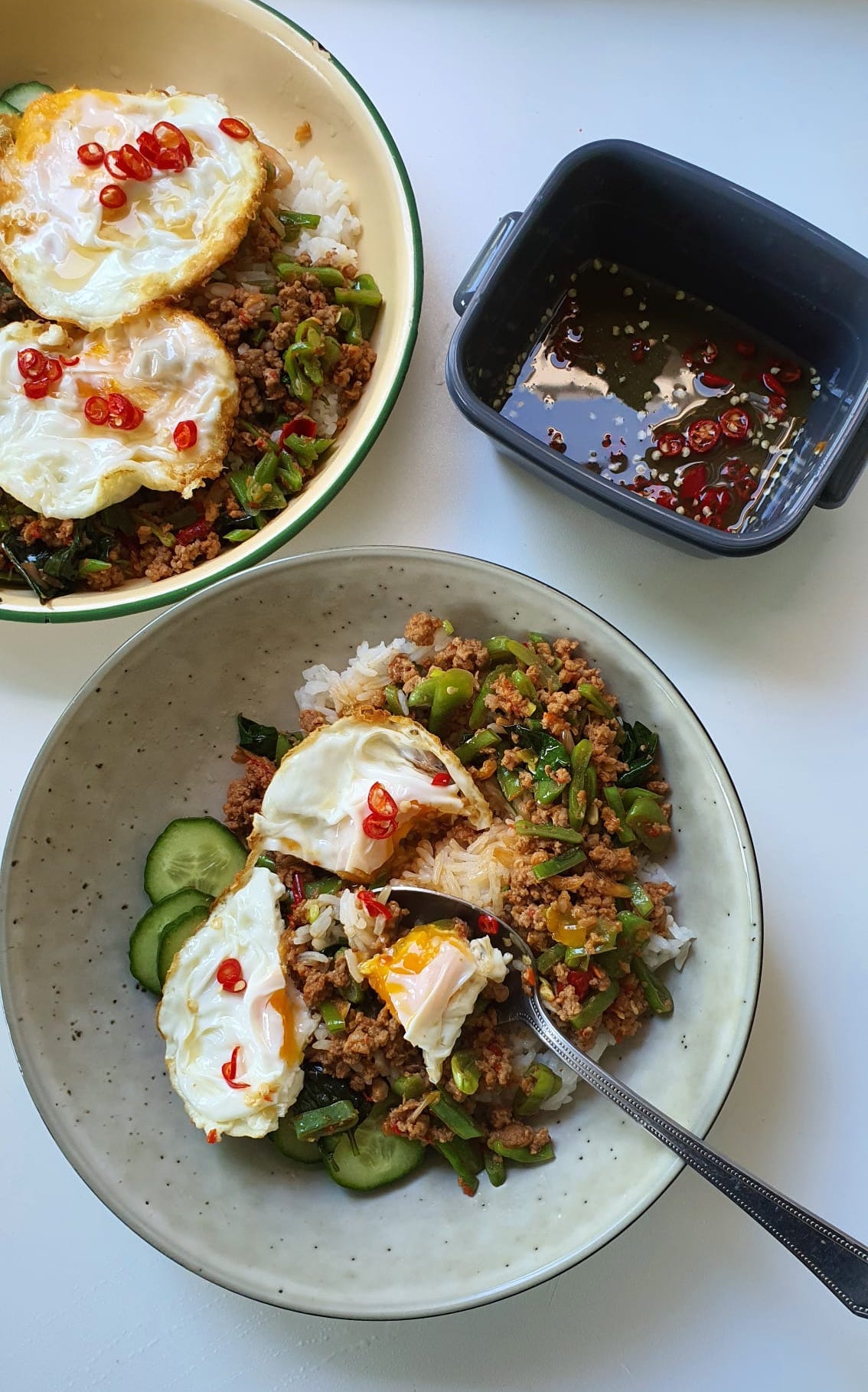Pad krapao
It’s almost time to move into our new apartment, and our belongings are still on their way to us from Australia. It is going to take between another two to four weeks for me to get my hands on all our cooking equipment, so we will have to make do with cooking meals out of my new wok. Now that it has been seasoned, the advice that I’ve received is to do as much stir-frying as possible to build up its non-stick patina. And when I think of stir-fries, my mind immediately goes to pad krapao ผัดกะเพรา. There used to be a Thai stall at my school canteen that sold a great version of it; but to be fair, to ruin pad krapao, you have to try pretty hard.
The name literally translates to ‘holy basil stir-fry’, so it is all about the fragrance of basil. If you go to an Asian market, you’ll encounter several types. There is Thai basil, which I wrote about in my book Wet Market to Table. It is known colloquially as nine-storey pagoda (九层塔) for the way that the plant forms nine tiers of leaves when fully grown, resembling a tower. It is used widely throughout Asia from pho in Vietnam to popcorn chicken in Taiwan. There’s also kemangi, or lemon basil, that is used widely in Indonesian cooking - my aunt’s helper made nasi bakar with kemangi on my last trip to Singapore and it was incredibly aromatic.
Thai basil is the one with purple stems on the top right corner and kemangi in the small white basket on the bottom left:
Holy basil, the namesake ingredient in pad krapao, is unfortunately harder to find. Also known as tulsi, it grows like a weed in Thailand, but does not travel well and is difficult to grow outside of its native habitat. While one might naturally assume that Thai basil would be a natural substitute for holy basil, Pailin Chongchitnant of Hot Thai Kitchen has written in her new book Sabai that Italian basil is closer in flavour.
Pad krapao comes together quickly so I like to prepare the ingredients for the dish plus any accompaniments before the frying takes place. One simple accompaniment is cucumber slices that not only add balance to this meat-heavy dish, but also offers cool respite from all that heat.
I also make a sauce with bird’s eye chillies (prik nam pla) to drizzle over the dish as we like. All it is is sliced chillies with enough fish sauce to cover, plus a squeeze of lime juice. It’s good to do this in advance because the heat from the chillies begin to infuse the fish sauce, and likewise, the fish sauce tames some of the sharp heat of the chillies themselves.
To top the dish, wok-fried eggs are sublime. They develop crispy, frilly edges and puffy whites, while the yolks remain molten. While I usually prefer jammy yolks, molten yolks are preferred here because pad krapao is a fairly dry dish.
To do this, you need to start with a generous amount of oil because you are essentially deep-frying the egg. Once the oil is hot, crack the egg directly into it and allow it to set and crisp up. Slide your spatula under the egg to gently dislodge it from the base - this shouldn’t require much effort if your wok has been seasoned. With your spatula or a large spoon, baste the yolk with the oil - this encourages it to cook in the same time that it takes the white to crisp up (which happens very quickly).
On to the actual stir-fry! Garlic and chillies are key to flavouring the dish, so it is important to use more than you think you’ll need. The chillies are not only here for heat; as they cook, they turn mellow and sweet, and their colour bleeds into the oil, tinging the meat an attractive orangey-red. If you’re wary about the heat, it’s far better to use larger, milder chillies than to reduce the quantity of chillies.
A traditional pad krapao has no vegetables, but because we’ve been cutting down on our meat intake in recent years, I use a mix of meat & sliced beans. Once the garlic and chillies are very fragrant, I add the meat and veg to the pan. You can immediately see what I mean by the the chillies staining the meat in an appetising way:
In terms of seasonings, while purists insist on the use of only fish sauce, soy sauce and oyster sauce have come to characterise modern versions of this dish. It is not uncommon to encounter versions with dark soy sauce for a richer colour and a touch of sugar. I use a combination of fish sauce, oyster sauce, and kecap manis in mine - though somewhat unconventional, I find that kecap manis provides both the sweetness and deep colour that I like in this dish.
Once the dish is seasoned to your taste, add the basil, fry just long enough to wilt it, and then take the wok off the heat immediately:
Generously spoon the mixture over a mound of rice, add a couple of slices of cucumber, and top with the eggs. Drizzle with the spicy, tangy fish sauce to your heart’s content.
Pad krapao
Serves 2 generously

